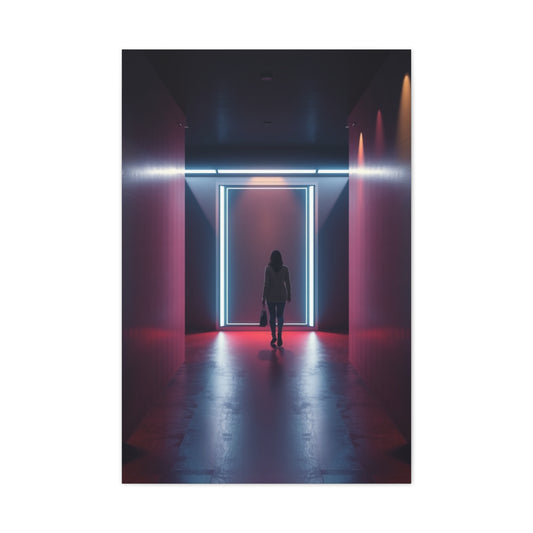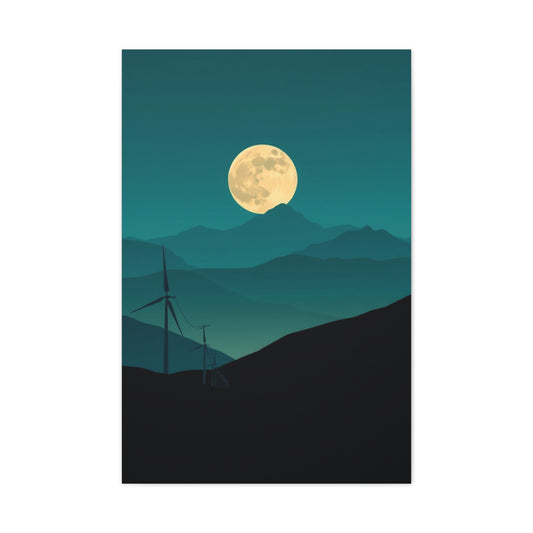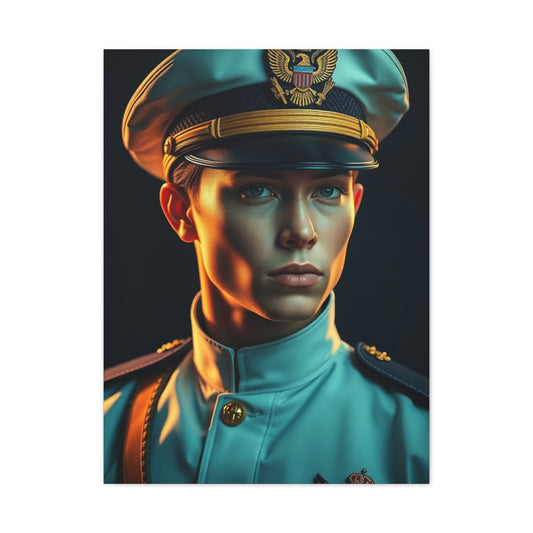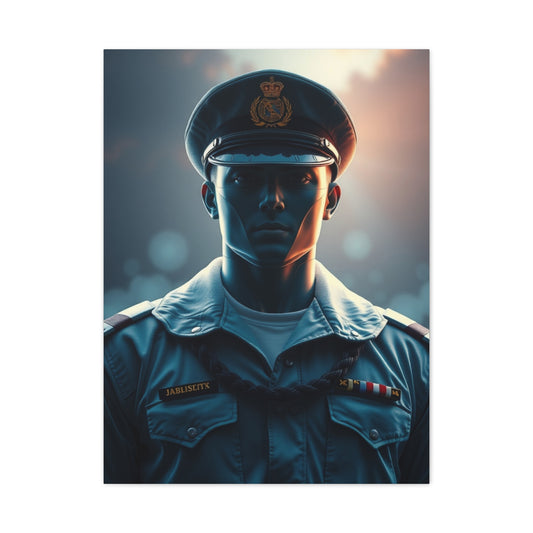Choosing a professional camera in 2024 means investing in a precision-engineered tool designed to meet the evolving demands of the photography industry. Whether you’re shooting fast-paced sports, elegant portraits, cinematic video, or high-resolution commercial images, the right camera can elevate your creative output and workflow efficiency.
This curated list of the 17 best professional photography cameras available this year reflects the peak of imaging innovation, offering an array of options for every photographic discipline. These models deliver outstanding performance, from impeccable autofocus systems and breathtaking resolution to rugged reliability and advanced video capabilities.
1. Nikon Z9
Best Overall Professional Camera in 2024
The Nikon Z9 represents the pinnacle of modern camera engineering, blending uncompromised speed, extraordinary resolution, and unparalleled video capabilities into one powerful flagship body. Tailored for professional photographers who demand top-tier performance in diverse shooting scenarios, this mirrorless powerhouse is designed to handle everything from commercial studio sessions and fashion campaigns to wildlife tracking and cinematic video production.
At the heart of the Z9 lies a 45.7-megapixel stacked CMOS sensor paired with Nikon’s EXPEED 7 image processor, delivering not only incredible detail but also unmatched responsiveness. Its ability to shoot at a staggering 120 frames per second in JPEG format (compressed) and 20 fps in RAW full resolution makes it a formidable choice for sports and action photographers who cannot afford to miss a single moment. With an electronic shutter and blackout-free real-time viewfinder, the Z9 redefines continuous shooting with remarkable fluidity and accuracy.
This camera is also a benchmark in professional video production. Capable of recording 8K video at 60 frames per second internally in 12-bit RAW, it offers filmmakers an expansive dynamic range and editing flexibility. It supports full-frame 4K at 120 fps as well, allowing for smooth slow-motion playback with pristine clarity. Unlike many hybrid cameras, the Z9 handles extended recording without overheating, thanks to its advanced thermal management system.
The autofocus system is another standout feature. With 493 phase-detection points and deep-learning AI subject recognition, the Z9 tracks people, animals, vehicles, and even birds in flight with a level of precision that borders on intuitive. The Eye-Detection AF has been refined for accuracy even in backlit or complex environments, ensuring reliable focus under pressure.
Constructed with a magnesium alloy chassis and reinforced with comprehensive weather sealing, the Z9 is purpose-built for demanding outdoor environments. Whether you're photographing arctic wildlife or working in humid rainforests, its resilience and battery efficiency make it a trustworthy tool for extended shoots.
2. Sony a1
Best for Action and Wildlife Photography
The Sony a1 redefines what professional photographers and filmmakers can expect from a flagship mirrorless camera in 2024. It is not just another high-performance device—it’s a trailblazing instrument that fuses extreme resolution with lightning-fast speed and cutting-edge autofocus intelligence. Tailored for elite professionals who work in dynamic environments, such as sports arenas, wilderness habitats, or fast-paced editorial settings, the a1 delivers extraordinary results with remarkable consistency.
At its core, the a1 houses a 50.1-megapixel full-frame Exmor RS stacked CMOS sensor, allowing it to capture immense detail without compromising speed. Thanks to its dual BIONZ XR processors, this camera achieves a jaw-dropping burst rate of up to 30 frames per second with full autofocus and auto-exposure tracking. This makes it one of the fastest high-resolution cameras available, allowing professionals to freeze fleeting action with unparalleled clarity.
|
Related Catagories: |
The autofocus system is among the most advanced in the world. It features 759 phase-detection points that cover approximately 92% of the image area, giving photographers exceptional flexibility when tracking erratic or unpredictable subjects. Real-time Eye Autofocus is available not only for humans but also for animals and birds, making the a1 a natural choice for wildlife photography, avian specialists, and sports shooters dealing with fast lateral movement.
Video creators will find the a1 just as compelling. It supports 8K video recording at 30p in 10-bit 4:2:0, offering exceptional clarity and dynamic range for professional cinematography. Additionally, it can record 4K at 120p, ideal for buttery-smooth slow-motion visuals. With internal 10-bit 4:2:2 color sampling and support for S-Cinetone, S-Log3, and HLG profiles, the Sony a1 ensures that color grading flexibility and tonal depth meet the rigorous standards of high-end video production workflows.
Another standout feature is its blackout-free, 240 Hz refresh rate OLED electronic viewfinder, providing a crystal-clear and delay-free visual experience that enhances tracking and framing. Its anti-distortion shutter allows flash synchronization up to 1/400s with the electronic shutter—unheard of in most mirrorless systems—and up to 1/500s with the mechanical shutter, giving studio and fashion photographers an extra edge.
Despite its immense capabilities, the Sony a1 maintains a compact and durable chassis with full weather sealing, magnesium alloy construction, and professional-grade ergonomics. Dual CFexpress Type A and SD UHS-II card slots ensure ultra-fast data writing speeds, critical for extended high-burst sessions and 8K video.
For photographers and videographers who demand no compromises—be it capturing a peregrine falcon mid-dive, documenting high-speed motorsports, or shooting commercial campaigns requiring impeccable resolution—the Sony a1 delivers an unmatched synthesis of speed, intelligence, and fidelity. In 2024, it stands as a beacon of technological prowess, providing forward-thinking professionals with the tools they need to lead, create, and innovate without limitations.
3. Canon EOS R5 II
Best for Hybrid Creators in 2024
The Canon EOS R5 II is the evolution of one of the most celebrated mirrorless cameras ever produced, emerging in 2024 as a finely tuned hybrid imaging solution for professionals who straddle both photography and filmmaking. Designed to meet the exacting needs of creators who demand superior performance in stills and video alike, the R5 II combines speed, resolution, and intelligent focusing in a remarkably compact and ergonomic body.
This camera is equipped with a newly refined 45-megapixel full-frame CMOS sensor that produces images with stunning clarity, tonal depth, and dynamic range. Whether you're capturing intricate product textures in a studio or sweeping vistas on location, the sensor renders details with exceptional fidelity. Its ability to shoot at up to 30 frames per second with a silent electronic shutter makes it equally capable in fast-moving scenarios, such as fashion, sports, or wildlife photography.
One of the EOS R5 II’s most significant upgrades lies in its video functionality. It supports uncropped 8K/60p internal video recording, a rare and coveted feature among mirrorless systems. This enables filmmakers to work with cinema-quality footage, offering increased flexibility for cropping, reframing, and post-production workflows. With Canon Log 3 and 10-bit 4:2:2 recording, the camera delivers a rich color palette and high dynamic range that meets professional cinematic standards. Additionally, heat management has been improved from the previous generation, allowing longer recording times without thermal interruptions.
The autofocus system is among the most sophisticated in Canon’s lineup. Featuring more than 1,000 autofocus points, and powered by Dual Pixel CMOS AF II, the system provides fluid subject tracking with remarkable accuracy. The camera intelligently identifies eyes, faces, animals, vehicles, and even birds in motion, locking on with remarkable tenacity. This is a critical advantage for hybrid creators working in varied lighting conditions or with complex subjects.
The EOS R5 II also introduces enhancements in in-body image stabilization, offering up to 8 stops of shake reduction. This is particularly valuable for handheld shooting—both in video and still photography—enabling sharp images and smooth footage even in challenging environments. Paired with Canon’s RF lenses, the stabilization performance becomes even more refined and seamless.
Built with a magnesium alloy chassis and full weather-sealing, the camera is ready for professional fieldwork. Dual card slots (CFexpress and SD UHS-II) support high-speed workflows, while the vari-angle touchscreen and upgraded EVF offer intuitive, real-time feedback.
Whether you’re filming cinematic sequences, capturing editorial portraits, or documenting fast-paced events, the Canon EOS R5 II delivers an elite balance of performance and portability. In 2024, it stands out as the definitive choice for photographers and videographers seeking a unified solution without compromise—making it a cornerstone in any professional creator’s arsenal.
4. Nikon Z7 II
Best for Landscape and Studio Work
The Nikon Z7 II is a high-resolution full-frame mirrorless camera that exemplifies precision, tonal richness, and imaging depth, making it a top-tier choice for professional landscape, fine art, and studio photographers. It continues Nikon's legacy of excellence in still photography, combining classical image craftsmanship with modern technological refinement. Designed for creators who demand maximum fidelity in every pixel, this model delivers a luxurious photographic experience from start to finish.
At the core of the Z7 II is a 45.7-megapixel back-illuminated CMOS sensor that renders breathtaking detail with exceptional sharpness, low noise levels, and a broad dynamic range. Whether you're capturing sweeping mountain ranges bathed in golden hour light or meticulously lit portraits in a studio environment, this sensor extracts subtle gradations in tone and texture with remarkable accuracy. The camera is particularly strong in reproducing natural color palettes and preserving highlights and shadows in high-contrast compositions.
One of its standout upgrades lies in the use of dual EXPEED 6 processors, which significantly enhance the Z7 II's responsiveness, image processing speed, and overall stability. These processors allow for improved buffer capacity, making the 10 frames per second burst mode not only possible but practical—even with large RAW files. This combination of speed and resolution is rarely seen in cameras at this level, giving it an edge in situations that require both sharpness and timing.
The Z7 II also supports 4K video recording at up to 60 frames per second (with a minor crop), making it a viable hybrid tool for professionals who occasionally incorporate video into their workflow. While not primarily a video-centric body, it handles short-form visual storytelling with excellent clarity, smooth motion rendering, and accurate color science.
Autofocus has been enhanced from its predecessor, now offering 493 phase-detection points and improved low-light focusing capability. It’s not the fastest AF system in Nikon’s lineup, but it is highly dependable, especially in static or controlled environments like portrait sessions or landscape scenes.
Another key strength of this camera is its build quality and ergonomic design. With a solid magnesium alloy body, the Z7 II offers weather sealing that protects against moisture and dust, allowing for confident use in rugged terrains or unpredictable conditions. The electronic viewfinder and tilting touchscreen are responsive and sharp, making on-the-fly adjustments easy and intuitive, even under bright sunlight or studio strobes.
Dual card slots (CFexpress/XQD and SD UHS-II) add workflow flexibility and backup security, a must-have feature for professional photographers who rely on consistent file management in the field or during critical commercial sessions.
5. Sony a7R V
Best Budget-Friendly Resolution King in 2024
The Sony a7R V is a remarkable fusion of precision imaging and cutting-edge technology, delivering an unprecedented combination of high resolution, intelligent autofocus, and impressive video features—at a cost that remains accessible for working professionals. This full-frame mirrorless camera is tailored for creators who demand pixel-level clarity, making it ideal for studio photography, commercial product work, fine art imaging, and architectural detail capture.
At its core, the a7R V features a staggering 61-megapixel backside-illuminated CMOS sensor—the highest resolution sensor currently available in Sony’s Alpha series. It produces files with incredible depth, rendering textures, patterns, and micro-details with lifelike realism. Whether you're photographing intricate fabrics, expansive cityscapes, or artworks destined for large-format prints, the camera’s sensor captures every nuance with unrivaled finesse.
A standout innovation in this model is its sophisticated AI-based autofocus system. Leveraging deep learning algorithms, it can identify and track subjects with extraordinary precision, including human eyes, animal features, birds in motion, and even vehicles. It adapts in real-time, adjusting to the subject’s posture, orientation, and speed, ensuring sharp focus even in challenging or dynamic environments. With 693 phase-detection points covering a vast portion of the frame, the autofocus is both expansive and highly accurate.
One of the most appealing features for static shooters is the Pixel Shift Multi Shooting mode, which combines multiple exposures to create composite images with more than 240 megapixels of effective resolution. This is particularly advantageous in controlled environments like studios or museum settings, where detail fidelity is paramount.
Despite its immense resolution, the Sony a7R V doesn’t sacrifice versatility. It offers a burst rate of up to 10 frames per second, making it capable of handling moderate action or moments requiring quick succession captures. In-body image stabilization has also been enhanced, providing up to 8 stops of compensation—vital for handheld shooting at slower shutter speeds, especially with high-resolution sensors prone to motion blur.
Video creators will also appreciate the a7R V’s cinematic capabilities. It records 8K video at 24p and 4K at up to 60p with full pixel readout and minimal rolling shutter. With 10-bit 4:2:2 internal recording and support for S-Log3 and S-Cinetone profiles, the camera offers professional-grade tools for color grading and post-production versatility.
Thermal efficiency has seen noticeable improvement over previous generations, allowing for extended video recording without overheating. The body design has been refined for better handling, with a new 4-axis articulating touchscreen, an ultra-high-resolution electronic viewfinder, and dual card slots (CFexpress Type A and SD UHS-II) for streamlined data management.
6. Canon EOS R3
Best for Photojournalism and Speed
Designed with sports and press photographers in mind, the Canon EOS R3 offers 30 fps burst shooting, 6K RAW video, and intuitive Eye-Control AF. The 24MP stacked sensor focuses on speed and responsiveness rather than megapixel count.
Highlights:
-
Resolution: 24 MP
-
Burst Rate: 30 fps
-
Video: 6K/60p, 4K/120p
-
Best for: Fast-paced action and real-time event coverage
7. Nikon D850
Best Professional DSLR Still in 2024
Even in a mirrorless-dominated market, the Nikon D850 remains a legend. Its 45.7MP sensor, optical viewfinder, and exceptional battery life appeal to professionals who prefer a tactile DSLR experience without sacrificing image quality.
Highlights:
-
Resolution: 45.7 MP
-
Burst Rate: 7 fps
-
Video: 4K/30p
-
Best for: Landscape, portraiture, and DSLR traditionalists
8. Nikon D780
Best Hybrid DSLR for Upgraders in 2024
The Nikon D780 stands as a bridge between traditional DSLR craftsmanship and modern mirrorless innovations, offering a refined photographic experience for enthusiasts and emerging professionals ready to elevate their gear. As a full-frame DSLR infused with forward-thinking features, it delivers the familiar ergonomics of Nikon’s legendary DSLR systems while introducing a wealth of mirrorless-style performance enhancements—making it an exceptional hybrid option in the current digital era.
At its core, the D780 features a 25-megapixel backside-illuminated CMOS sensor that delivers impressive image clarity, low-light sensitivity, and refined tonal transitions. Paired with the powerful EXPEED 6 image processor, the camera ensures fast data processing, improved color accuracy, and clean high-ISO performance across various lighting conditions. The result is a camera that can perform just as well in a studio as it does in fast-paced, unpredictable environments.
One of the D780’s most compelling features is its advanced dual autofocus system. In optical viewfinder mode, it utilizes a 51-point phase-detection AF system, perfect for photographers who prefer the tactile responsiveness of traditional DSLR shooting. When switching to Live View, the camera transforms into a mirrorless-like system with 273-point on-sensor phase-detection autofocus—providing Face Detection and Eye-Tracking capabilities that are typically found in newer mirrorless models. This duality is invaluable for those transitioning into more sophisticated workflows.
For creators incorporating video into their toolkit, the D780 offers robust multimedia features. It records 4K UHD video at 30 frames per second with full-pixel readout and no crop, ensuring sharp, cinematic footage with natural color profiles. Additionally, it supports 10-bit output via HDMI and N-Log gamma, catering to videographers looking for broader latitude in post-production color grading. These attributes position the D780 as a surprisingly capable video machine for a DSLR.
Speed and responsiveness are also highlights, with a continuous shooting rate of up to 12 frames per second in Live View using the electronic shutter, and 7 fps with the mechanical shutter—ideal for capturing sports, wildlife, or candid moments. The shutter itself is quiet and refined, contributing to discreet performance in sensitive shooting scenarios.
Durability is another hallmark of this model. Constructed with a rugged magnesium alloy frame and extensive weather sealing, the Nikon D780 is designed to withstand demanding environments. Dual UHS-II SD card slots provide reliability and flexibility in data management, while the battery life exceeds that of most mirrorless cameras, offering well over 2,000 shots per charge under optimal conditions.
9. Fujifilm GFX 100 II
Best for Medium Format Photography
With 102MP of medium format goodness, the GFX 100 II offers unmatched dynamic range, tonal precision, and color accuracy. Its ability to shoot 8K video and 8 fps makes it a versatile choice for commercial and landscape photographers alike.
Highlights:
-
Resolution: 102 MP
-
Burst Rate: 8 fps
-
Video: 8K/30p
-
Best for: Commercial, landscape, and fine-art photography
10. Fujifilm GFX 50S II
Best Entry Medium Format Camera in 2024
The Fujifilm GFX 50S II is a gateway to the world of medium format digital photography, offering aspiring professionals and discerning image-makers access to ultra-high-resolution imaging at a significantly more approachable cost than traditional medium format systems. Meticulously engineered, this camera brings together Fujifilm’s celebrated color science, an expansive sensor, and thoughtful ergonomics, making it a compelling choice for portraiture, fine art, product, and still-life photography.
At its core, the GFX 50S II features a 51.4-megapixel medium format CMOS sensor that is approximately 1.7 times larger than a standard full-frame sensor. This expanded surface area enables greater light-gathering capabilities, superior tonal transitions, and exquisite dynamic range. The sensor renders subtle textures, skin tones, and dimensional depth in a way that smaller formats struggle to match, providing a painterly realism that appeals to artists and commercial photographers alike.
|
Related Catagories: |
What sets the GFX 50S II apart within its class is its inclusion of in-body image stabilization (IBIS). This 5-axis stabilization system offers up to 6.5 stops of compensation, a rare and valuable feature in medium format cameras. It allows for handheld shooting at slower shutter speeds without introducing blur, making it possible to maintain image fidelity without always relying on a tripod—especially useful in controlled lighting environments or spontaneous indoor settings.
Another powerful feature is the Pixel Shift Multi-Shot mode, which combines multiple exposures to create ultra-high-resolution composite images with over 200 megapixels of effective detail. This function is ideal for static subjects like artwork, architecture, or meticulously styled commercial layouts, where ultimate clarity and color accuracy are non-negotiable.
Despite its large sensor, the GFX 50S II maintains a relatively compact and lightweight form factor compared to traditional medium format systems. Its magnesium alloy body is solid and weather-sealed, ensuring durability under professional field conditions. The grip is deep and balanced, contributing to a secure handling experience for extended sessions.
Video capabilities, while modest, are suitable for basic professional use. The camera records Full HD 1080p at 30 frames per second, adequate for behind-the-scenes footage, studio walkthroughs, or multimedia presentations. Though not designed for cinematic production, it offers versatility for still shooters who occasionally need to integrate video into their work.
Autofocus is driven by a contrast-detection system with 425 selectable points. While not as fast as hybrid AF systems in mirrorless counterparts, it performs with dependable accuracy in studio or slow-paced shooting environments where precision trumps speed.
In 2024, the Fujifilm GFX 50S II stands out as the most attainable medium format camera for professionals eager to explore the next level of image quality. It offers a transformative step up in resolution and tonality, providing an elevated visual language that empowers photographers to create gallery-worthy images with depth, subtlety, and exceptional clarity.
11. Sony a7C
Best Compact Full-Frame Camera in 2024
The Sony a7C is a revolutionary blend of portability and performance, packing full-frame imaging power into one of the smallest mirrorless camera bodies in its class. Designed with mobile creators, travel photographers, and vloggers in mind, the a7C combines the imaging fidelity of a high-end sensor with a discreet, lightweight form that makes it easy to carry anywhere—from bustling city streets to remote landscapes.
At the heart of the a7C lies a 24.2-megapixel backside-illuminated Exmor R CMOS sensor. Despite its compact footprint, this sensor offers the expansive dynamic range, nuanced tonality, and low-light performance typically reserved for much bulkier systems. Whether capturing golden hour portraits, nighttime urban scenes, or fast-moving action, the sensor handles complex lighting with grace and produces clean, vibrant images with natural color gradations.
The a7C’s autofocus system is powered by Sony’s renowned Real-time Tracking and Eye Autofocus technologies, offering swift and intelligent subject recognition. With 693 phase-detection points and 425 contrast-detection areas, the camera delivers near-instantaneous focus on faces, eyes, and moving subjects—ideal for spontaneous moments or dynamic video sequences. Animal and real-time eye tracking for pets and wildlife are also included, expanding its appeal for outdoor and adventure photographers.
A continuous shooting speed of 10 frames per second allows creators to capture fleeting expressions and movement with confidence, ensuring no critical moment is missed. The camera also supports silent shooting, making it a subtle yet powerful tool for street photographers or those working in quiet environments like weddings or documentary events.
In terms of video capability, the a7C records crisp 4K footage at 30p using full pixel readout and no pixel binning, delivering sharpness and clarity that rival larger cinema-focused systems. With 8-bit internal recording, support for S-Log profiles, and a flip-out vari-angle touchscreen, the camera is an excellent choice for vloggers and solo content producers who need flexibility on the move. The built-in microphone input and headphone jack offer professional-level audio control without external recorders.
The camera's design emphasizes portability without compromise. Weighing approximately 509 grams, the a7C fits easily into a small camera bag or even a jacket pocket, making it the ideal travel companion. Despite its size, it features weather-resistant sealing, a robust magnesium alloy chassis, and a deep grip for secure handling during long shooting sessions.
Battery life is another highlight. Leveraging Sony’s NP-FZ100 battery, the a7C offers extended stamina well beyond most compact cameras, allowing users to shoot or film for prolonged periods without frequent recharges—a crucial asset for travel documentaries or on-location shoots.
12. Canon EOS 5D Mark IV
Best for Canon DSLR Users
The 5D Mark IV continues to serve professionals with its 30.4MP sensor, robust EF lens compatibility, and enduring performance. It’s a top pick for photographers who prefer the proven reliability of DSLRs.
Highlights:
-
Resolution: 30.4 MP
-
Burst Rate: 7 fps
-
Video: 4K/30p
-
Best for: Event and portrait professionals using Canon glass
13. Panasonic Lumix GH7
Best Budget Video-Focused Camera
The GH7 excels in frame rate variety and video versatility. With 5.7K/60p and a staggering 1080p/300p capability, it’s a lightweight choice for filmmakers seeking affordable power in a Micro Four Thirds system.
Highlights:
-
Resolution: 25.2 MP
-
Burst Rate: 14 fps
-
Video: 5.7K/60p, 1080p/300p
-
Best for: Indie filmmakers and budget videographers
14. Canon EOS R
Best Entry-Level Full-Frame Mirrorless
Despite its age, the EOS R still delivers solid performance for photographers entering the professional mirrorless scene. It offers Canon’s signature ergonomics, excellent color science, and 30.3MP resolution.
Highlights:
-
Resolution: 30.3 MP
-
Burst Rate: 8 fps
-
Video: 4K/30p
-
Best for: Beginners moving into professional territory
15. Hasselblad X2D 100C
Best for Studio and Art Photography in 2024
The Hasselblad X2D 100C is a true masterpiece of photographic engineering, created for discerning professionals who demand uncompromising image quality and aesthetic refinement. Positioned at the pinnacle of medium format digital photography, the X2D 100C offers a meticulously crafted experience that blends Scandinavian design sensibility with advanced imaging innovation. For studio artists, commercial photographers, and gallery-bound creators, this camera is less a tool and more an extension of visual intention.
At its core, the X2D 100C features a colossal 100-megapixel medium format BSI CMOS sensor that renders images with an almost surreal level of fidelity. Each file contains vast detail, tonal richness, and extraordinary depth, making it perfect for large-scale prints, fine art archival work, or commercial campaigns that require pixel-level perfection. The sensor size—significantly larger than a full-frame—ensures smoother gradations, impeccable dynamic range, and minimal noise, even in low-light conditions.
The camera offers a staggering 15 stops of dynamic range, capturing every delicate transition from highlight to shadow with cinematic subtlety. This is a critical feature for high-end fashion photography, museum-grade documentation, and still-life compositions, where preserving detail in every tonal zone is paramount. The Hasselblad Natural Colour Solution (HNCS) further enhances the visual output, delivering skin tones and textures with lifelike accuracy and elegance.
Unlike most cameras in its class, the X2D 100C includes a built-in 1TB SSD—an extraordinary feature that not only boosts workflow speed but also provides peace of mind during demanding shoots. This internal storage solution eliminates reliance on external media and reduces the risk of data bottlenecks, allowing photographers to focus purely on their creative process. With support for lossless 16-bit RAW files, the X2D provides immense post-processing flexibility.
While the camera is not intended for video capture, its still photography capabilities are second to none. With a modest burst rate of 3.3 frames per second, the X2D is clearly designed for contemplative shooting rather than rapid-fire action. However, this pace aligns beautifully with the careful, methodical nature of commercial studio photography, where lighting, composition, and detail are honed to perfection.
Ergonomically, the X2D reflects a minimalist philosophy. Its clean lines, intuitive control dials, and crisp 3.6-inch rear touchscreen emphasize simplicity and tactile control. The built-in 5.76M-dot electronic viewfinder offers a lifelike preview of images with excellent clarity, aiding in precise manual focusing and composition refinement. The body is crafted from a single block of aluminum alloy, giving it a monolithic, sculptural presence that feels every bit as premium as its performance.
In 2024, the Hasselblad X2D 100C stands as a benchmark for studio and fine art photography. Its unparalleled resolution, immense tonal latitude, and understated elegance make it an essential instrument for professionals who view photography as both craft and expression. For those who work at the highest level of visual storytelling, this medium format marvel is nothing short of transformative.
16. Hasselblad 907X 50c
Best Vintage-Style Medium Format Camera in 2024
The Hasselblad 907X 50c is an exquisite blend of heritage craftsmanship and contemporary imaging technology. Marrying the iconic aesthetics of Hasselblad's historic V-series film cameras with a powerful modern digital back, the 907X 50c delivers a photographic experience rooted in legacy but infused with forward-thinking precision. It stands as a poetic tool for professionals and collectors alike who value not only technical quality but the physical and visual artistry of the photographic process.
This modular medium format system is centered around a 50-megapixel CMOS sensor that is physically larger than full-frame, providing ample surface area for capturing stunning detail, exceptional tonal gradation, and a gentle fall-off in depth of field that lends images an almost three-dimensional quality. Whether you're documenting fine art, creating intimate portraits, or capturing architectural compositions, the files produced by the 907X 50c are filled with nuance, texture, and dynamic range.
One of its defining features is its compatibility with vintage Hasselblad V-series lenses and film bodies, allowing photographers to merge analog style with digital convenience. For professionals who grew up using classic cameras, or for those who appreciate the tactile elegance of manual shooting, this system creates a seamless fusion of eras. It’s also fully compatible with modern XCD lenses, offering autofocus and electronic aperture control for those who want contemporary functionality.
The 907X 50c is equipped with a 3.2-inch rear touchscreen that functions as both a live view and menu interface. Its tilting design enables waist-level shooting, paying homage to traditional medium format workflows while remaining entirely modern in execution. The interface is clean and intuitive, offering access to essential controls without overwhelming the user. In addition, its interface supports gesture-based navigation, enhancing ease of use in both handheld and tripod-mounted situations.
Although not focused on video, the camera does support Full HD recording at 30p—useful for short video clips, behind-the-scenes documentation, or multimedia storytelling where motion is secondary to the photographic component. Its video capability, while modest, is a bonus for still photographers who occasionally require light videography integration.
The build quality is exemplary. Encased in a finely machined aluminum chassis with minimal lines and a matte black finish, the 907X 50c is visually striking and deeply ergonomic. The camera’s minimalist design eschews clutter in favor of a clean, contemplative layout that encourages deliberate, thoughtful composition—ideal for slow photography practices and artistic exploration.
Burst shooting is limited to 2.7 frames per second, which further underscores its role as a deliberate, composed image-making device rather than a tool for high-speed action. However, in the studio, gallery, or fine art environment, this pace is more than sufficient, supporting precision over rapidity.
In 2024, the Hasselblad 907X 50c remains one of the most elegant and conceptually rich cameras available. It serves not only as a high-resolution digital capture system but also as a philosophical tribute to the golden age of medium format photography—delivering legacy aesthetics and contemporary image quality in one seamless, artful package.
17. Olympus OM-D E-M1X
Best Lightweight Pro Camera for Outdoors
The E-M1X’s 60 fps bursts and robust build make it a solid choice for nature and action photographers who need portability without compromising speed or control. Its image stabilization is among the best in class.
Highlights:
-
Resolution: 20 MP
-
Burst Rate: 60 fps (electronic)
-
Video: 4K/30p
-
Best for: Outdoor, wildlife, and fast-action photography
Conclusion
In 2024, professional photographers are spoiled for choice with a remarkable lineup of cameras designed to meet every artistic and commercial need. From the Nikon Z9's all-around dominance to the Fujifilm GFX 100 II's breathtaking resolution, the tools available today allow for boundless creative potential.
Ultimately, the best camera for professional photography is the one that aligns seamlessly with your shooting style, genre, and creative ambitions. Whether you're capturing fine details in studio lighting or freezing motion in unpredictable outdoor conditions, the right gear will sharpen your vision and elevate your storytelling.
























